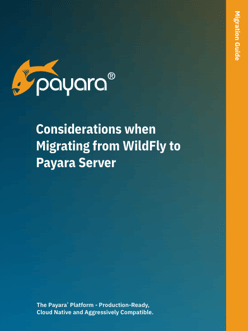Considerations When Migrating from Wildfly to Payara Server
Published on 06 May 2020
 by Jadon Ortlepp
by Jadon Ortlepp
Migrating applications from WildFly to Payara Server can be a simple and straightforward process because both servers rely on the Jakarta EE (Java EE) specifications. However, there are differences in many areas because many Java EE APIs in WildFly and Payara Server are implemented by different components. Moreover, the configuration of certain aspects like external resources, high-availability and deployment is not covered by any specification and is, in fact, very different in both servers. Although Payara Server offers similar features as WildFly, they are often based on different technologies and concepts, and often also use different terminology. Therefore, before going into migration from WildFly to Payara Server, we’ll provide you with an overview of similar features and concepts that exist in both WildFly and Payara Server.
Under the hood, Payara Server contains a lot of different technologies to provide the same Jakarta EE APIs. While WildFly is mainly based on JBoss / Red Hat components, Payara Server is solely based on components that are Java EE reference implementations and now most of them are under the auspices of the open source Eclipse Foundation. However, some components used in WildFly are also used by Payara Server as they are Java EE reference implementations as well.
In this guide we will cover:
- Overview of the differences between WildFly and Payara Server
- Components and features in Payara Server and their equivalent in WildFly
- How to configure some frequently-used resources and features in Payara Server compared to WildFly
We also have the following resources and an entire “Getting Started” section devoted to new Payara Platform users, featuring a 6 step process to setting up and using the Payara Platform.
Related Posts
The Payara Monthly Catch - August 2025
Published on 02 Sep 2025
by Dominika Tasarz
0 Comments
JBoss EAP 7 End of Support: What Java Developers Need to Know (And What to Do Next)
Published on 15 Aug 2025
by Chiara Civardi
0 Comments


